What is Air Drilling In Oil and Gas
In the oil and gas industry, drilling operations often take place in challenging geological formations. Air drilling is one technique commonly used to overcome such challenges, especially when dealing with rock formations that are either too unstable for conventional drilling fluids or too permeable, causing loss of drilling fluids.
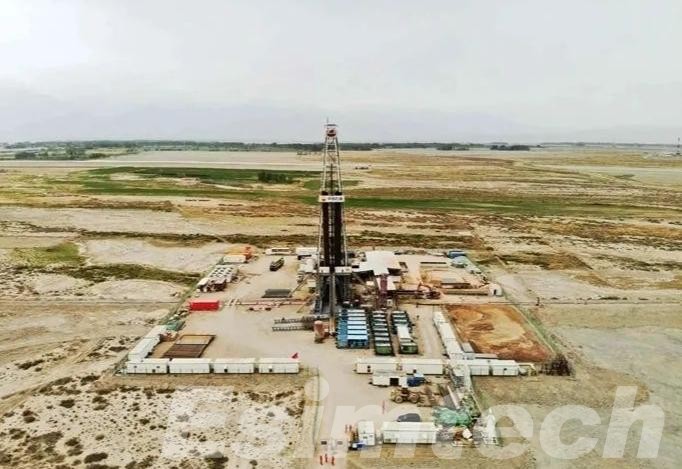
History of Air Drilling in Oil and Gas
The development of air drilling in oil and gas evolved from early innovations to address specific geological challenges where traditional drilling fluids were ineffective. Key points in its history include:
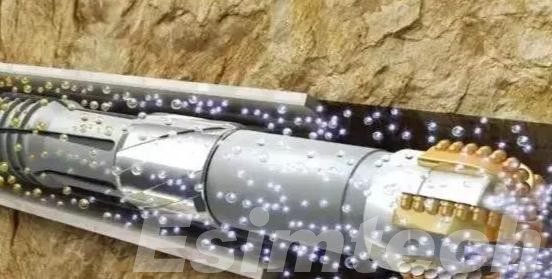
- Early 20th Century Origins: Air drilling first emerged as an alternative to conventional drilling fluids for dry, hard rock formations. Traditional fluid-based drilling methods struggled in these formations, where fluid losses and ineffective cuttings removal created delays and added costs.
- Refinements in the 1940s and 1950s: In the United States, oil and gas operators advanced air drilling methods to improve drilling speed and efficiency. The technology was refined to address two main issues:
- Fluid Loss Control: Air drilling allowed drilling without the need for heavy mud, which often resulted in excessive fluid loss in certain formations.
- Increased Drilling Speed: Air-based systems enhanced the rate of penetration in hard rock, making the process faster and more cost-effective.
- Onshore Adoption and Expansion: Initially, air drilling was primarily used in onshore operations in specific regions, where conditions were ideal. With further technological improvements, air drilling expanded to different regions, particularly in formations where conventional fluid-based drilling faced limitations.
- Technological Advances in the Late 20th Century: New techniques, such as mist drilling and foam drilling, were developed to adapt air drilling for use in formations with higher water influx or challenging conditions. These advancements expanded the use of air drilling to a broader range of geological scenarios.
- Modern Air Drilling Applications: Today, air drilling is widely used in unconventional reservoirs and is more adaptable to complex drilling environments, with advanced options such as nitrogen membrane drilling and aerated drilling allowing for even greater flexibility in sensitive or reactive formations.
Types of Air Drilling in Oil and Gas
Air drilling can be adapted to meet the specific conditions of the formation being drilled. The primary types of air drilling include:
Dust Drilling
Dust drilling is a straightforward air drilling technique that relies solely on compressed air to carry cuttings out of the borehole. It’s mainly used in hard, dry formations with minimal risk of encountering water. This method is well-suited for stable rock formations, as it reduces the need for drilling additives, making it an economical choice when conditions allow. However, dust drilling is limited to dry formations due to its inability to handle water effectively.
Mist Drilling
Mist drilling involves adding a small amount of water or oil mist to the compressed air stream, which helps control dust and improves borehole stability. This approach is beneficial in formations where small amounts of water might be present, as it allows for better dust control while keeping the borehole clean. Mist drilling enables drilling to continue in slightly wet conditions without compromising the stability of the hole.
Foam Drilling
Foam drilling involves adding a foaming agent to an air stream, generating a stable foam that effectively lifts drill cuttings while managing water intrusion. With a greater carrying capacity than mist, foam is ideal for formations with moderate water inflow. This approach enhances borehole stability and improves hole cleaning, making it well-suited for drilling through formations that would otherwise be difficult to drill with dry methods. Foam drilling is particularly useful in softer formations with water-bearing zones.
Aerated Drilling
Aerated drilling uses compressed air or nitrogen mixed with drilling fluids, such as water or mud, to create a lightweight mixture that lowers hydrostatic pressure on the formation. This technique is beneficial in pressure-sensitive formations, as it stabilizes the borehole while minimizing fluid loss into the surrounding formation. Aerated drilling is typically applied in geologically complex formations where some fluid support is needed to maintain pressure balance.
Nitrogen Membrane Drilling
In nitrogen membrane drilling, nitrogen gas is produced on-site from ambient air via a nitrogen membrane unit. As an inert gas, nitrogen helps prevent oxidation and unwanted chemical reactions with sensitive formations. This technique is especially beneficial in reactive formations or those containing minerals prone to oxidation or corrosion when exposed to oxygen. Nitrogen membrane drilling is ideal for operations where formation sensitivity and stability are priorities, offering additional protection against downhole corrosion and wellbore instability.
How Does Air Drilling Work
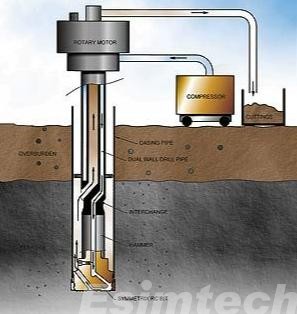
Air drilling works by using compressed air, nitrogen, or a gas mixture to circulate cuttings out of the wellbore, instead of traditional drilling fluids. The process relies on specialized equipment to inject and manage the air or gas flow, ensuring effective hole cleaning and maintaining borehole stability. Here’s a breakdown of how air drilling works:
- Compressed Air Injection: High-pressure compressors inject air, nitrogen, or a gas mixture into the drill string, sending it down to the drill bit. The compressed air generates a high-velocity stream that lifts the rock cuttings from the formation.
- Cuttings Removal: The air or gas then flows back up the wellbore through the annular space between the drill pipe and the well walls, carrying the cuttings to the surface. This ongoing circulation ensures the wellbore remains clear of debris.
- Air-Gas Mixtures: Depending on the formation, a combination of air, nitrogen, or foaming agents may be used to improve hole cleaning, manage formation pressures, or handle water influx. The mixture enhances air’s ability to transport cuttings while preventing issues like hole collapse or excessive gas flow.
- Specialized Equipment: Air drilling requires additional equipment, such as compressors, boosters, and separators, to manage the air supply and remove cuttings efficiently. These tools also help separate any water produced from the formation to prevent contamination.
- Pressure Management: Operators carefully monitor wellbore pressure during air drilling to prevent blowouts or collapses. Maintaining the correct air pressure balance ensures stability, safeguarding against formation damage while optimizing drilling efficiency.
By using compressed air and gas mixtures, air drilling optimizes the removal of cuttings, reduces the need for fluids, and enhances drilling performance in certain geological conditions.
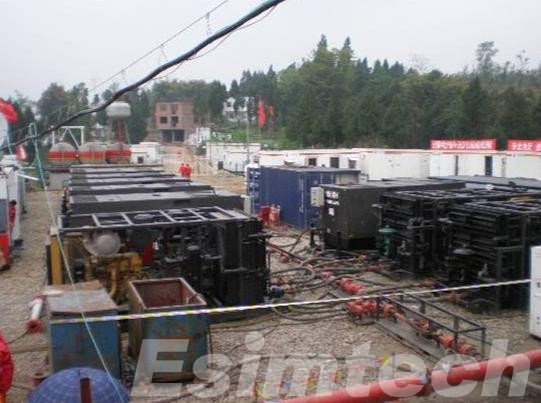
Benefits of Air Drilling Compared to Conventional Drilling
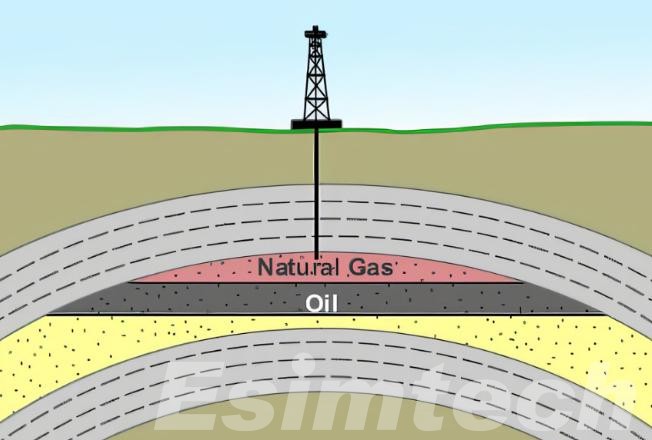
Air drilling offers several distinct advantages over traditional fluid-based drilling methods, particularly in specific geological conditions. Here are some key benefits:
- Faster Drilling Speed: Air drilling is typically faster than conventional drilling, especially in hard rock formations. The use of high-pressure air or gas increases penetration rates by efficiently removing cuttings, which reduces the time needed to drill through tough layers.
- Minimized Formation Damage: Air drilling reduces the risk of formation damage, especially in sensitive or low-pressure zones. Traditional drilling fluids can sometimes invade formations, causing issues like clay swelling or fracturing. In contrast, air drilling is less invasive, preserving the integrity of the formation.
- Lower Drilling Fluid Costs: Unlike conventional methods that require expensive drilling fluids such as muds, air drilling eliminates or significantly reduces the need for these fluids. This results in cost savings, particularly in formations that do not require extensive fluid management.
- Effective Cuttings Removal: The high-velocity airflow used in air drilling efficiently carries cuttings to the surface, preventing buildup in the borehole. This ensures better hole cleaning and reduces the risk of blockages or stuck pipe incidents.
- Safer for Reactive Formations: For formations prone to chemical reactions, such as those containing sulfides, air drilling—especially when using inert gases like nitrogen—prevents oxidation and other reactions that could destabilize the wellbore or pose safety hazards. This makes air drilling a safer choice in reactive geological conditions.
By offering faster, more cost-effective, and environmentally responsible drilling, air drilling stands out as an excellent alternative in certain scenarios, making it an essential tool in modern oil and gas exploration.
Summary
Air drilling uses compressed air or gas instead of traditional fluids to remove cuttings from the wellbore. It includes methods like dust, mist, foam, aerated, and nitrogen membrane drilling, each suited to different formations. Benefits include faster drilling, less formation damage, lower costs, and environmental advantages. Overall, air drilling is a more efficient and cost-effective alternative in certain geological conditions.
